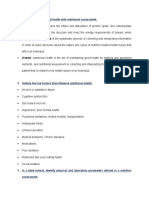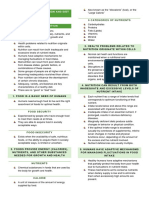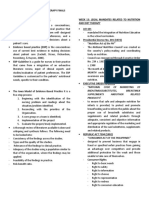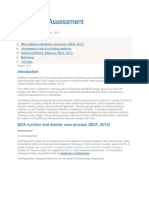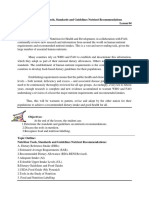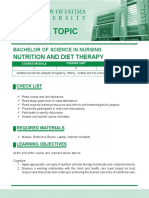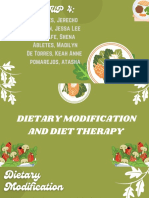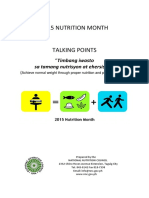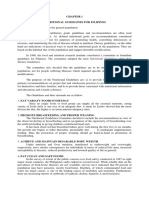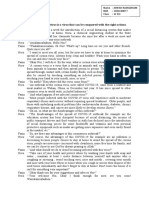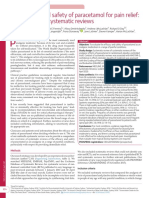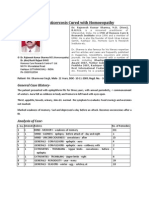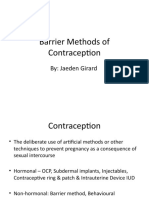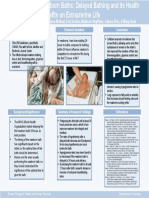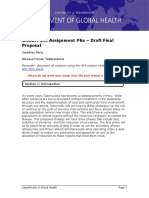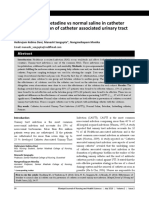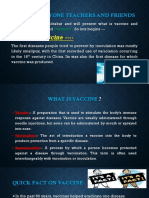ASSESSMENT OF
NUTRITIONAL STATUS
O.J. Factoriza
�NUTRITIONAL STATUS OR
NUTRITURE
Health
status of an individual or
population groups as influenced by
their intake and utilization of
nutrients, which change throughout
the life cycle
�GOOD OR OPTIMAL NUTRITION
THE
BODY HAS AN ADEQUATE
SUPPLY OF ESSENTIAL NUTRIENTS
THAT ARE EFFICIENTLY UTILIZED
SUCH THAT GROWTH AND GOOD
HEALTH ARE MAINTAINED AT THE
HIGHEST POSSIBLE LEVEL
�MALNUTRITION
a pathological state due to a relative
or an absolute deficiency or excess of
essential nutrients at the cellular
level for a long period of time.
The condition manifests itself by
physical, physiological and
biochemical abnormalities
�FORMS OF MALNUTRITION
UNDERNUTRITION a deficiency state due to
lack of calories and or one or more of the
essential nutrients
OVERNUTRITION refers to an excess of one or
more nutrients but usually due to an excess of
energy
�NUTRITIONAL ASSESSMENT
A
comprehensive approach to
defining the nutritional status
obtained from ecological,
anthropometric, dietary, clinical,
biochemical and biophysical studies
to improve human health.
� Identify
the methods to be used to
detect nutritional deficiency:
a. dietary inadequacy
b. decrease level in reserve tissue
c. decreased level in body fluids
d. Functional change
e. Anatomical sign
�PATHOGENESIS OF NUTRITIONAL
DEFICIENCY DISEASE
Primary Factor
Dietary deficiency
Nutritional
deficiency
Secondary factors
Conditioning
factors
Tissue depletion
Biochemical
changes
Functional
Changes
Anatomic changes
�OBJECTIVES OF NUTRITIONAL
ASSESSMENT
1.
2.
3.
4.
5.
6.
To identify specific nutritional problems of
groups/persons at nutritional risk
To assess the relationship between nutrition
and health
To determine the type of intervention to alter
nutritional status
To map out the magnitude and geographical
distribution of malnutrition
To discover and analyze ecological factors
responsible for malnutrition
To monitor the effects of nutrition intervention
�PURPOSE ON NUTRITIONAL
ASSESSMENT
Strategic planning
Basis for program evaluation
Policy formulation
�NUTRITIONAL ASSESSMENT
SYSTEMS
1. Nutrition Survey cross sectional or one-time
assessment of the nutritional status of the
population to establish baseline data or ascertain
the overall nutritional status of a population. It
can be used to :
a. Allocate resources to the subgroups in need
b. Formulate policies to improve the nutrition of
the population
�2. Nutrition surveillance continuous collection of
nutritional parameters from a selected
population groups. It is called monitoring when
carried out on selected individuals who are at
high risk. Results obtained can be used for:
a. Long term planning
b. timely warning
c. Program management
�3. Nutrition screening it involves identification of
malnourished individuals requiring intervention
4. Nutrition intervention it targets population
subgroups identified as at risk during nutrition
surveys or nutrition screening
Types: supplementation
fortification
dietary approaches
�METHODS OF NUTRITIONAL
ASSESSMENT
Direct method
A- anthropometry
B Biochemical
C Clinical
D Dietary
Indirect method
E Ecological factors
F- Functional assessment
Vital statistics
�IMPORTANT CONCEPTS IN
NUTRITIONAL ASSESSMENT
1.
2.
3.
4.
5.
Validity the adequacy to which any measurement or
index reflects the nutritional parameter of interest
Precision/ reproducibility
Coefficient of variation(CV) = Standard deviation x 100
Mean
Accuracy the extent to which measurement is close to
the true value
Sensitivity (Se) extent to which an index
/measurement reflects the nutritional status or predicts
nutriture
Specificity (Sp) - ability to identify and classify genuinely
malnourished persons
�6.
7.
8.
9.
Predictive (V) the likelihood that a test
correctly predicts the presence or absence of
malnutrition or disease.
Prevalence the number of persons with
malnutrition or disease during a given time
period
Confounding / confounder a characteristics or
variable that is distributed differently in the
study and control groups that affects the
outcome being assessed. E.g. Age, gender, social
class
Measurement and indeces :
Measurement a size or quantity measured by
a standard
�Indeces constructed from two or more raw
measurements on a single subject
E.g. Weight-for-age, body mass index
10. Reference values obtained from a healthy
reference sample group
Reference values in the Philippines:
.International reference standards adopted for use
in the Philippines
.Local; reference values (FNRI-PPS)
.WHO 2005 Child Growth Standards
�10.
11.
Cut-off points based on the relationships
between nutritional assessment indices and low
body stores, functional impairment or clinical
signs of deficiency
Trigger levels may be combined with cut-off
points in population studies to set the level of an
index at which a public health problem exists of
a specified level of concern



